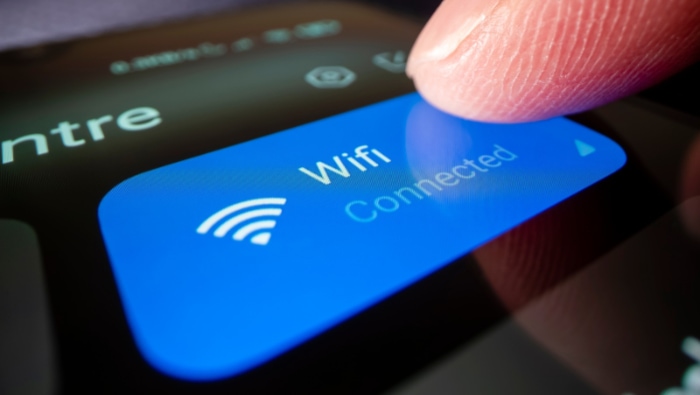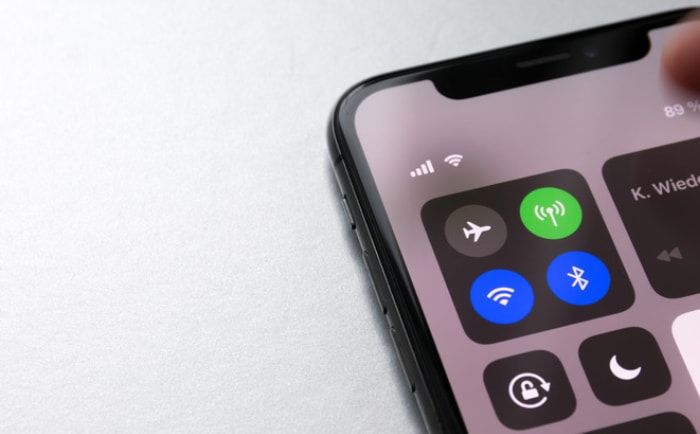What Is Wi-Fi 6? Better Streaming, Gaming, and Connectivity

Blazing-fast downloads, buffer-free streaming, and smooth connections for dozens of smart devices-Wi-Fi 6 is making these experiences reality for more people every day. As streaming movies in 4K, attending virtual meetings, and running a house full of smart gadgets become routine, Wi-Fi networks face unprecedented demands.
Wi-Fi 6, the new IEEE 802.11ax standard, steps in to raise the bar for speed, efficiency, and reliability. With smarter technology working behind the scenes, users enjoy stronger connections and fewer frustrations, even in packed homes or crowded offices.
Defining Wi-Fi 6 and Its Purpose
Wi-Fi 6, officially recognized as IEEE 802.11ax, represents the next step in wireless communication, designed to address the unique challenges of today’s connected environments. Wireless networks have grown far beyond simple internet access for laptops and smartphones.
They now support homes filled with smart appliances, offices reliant on cloud-based tools, and bustling public areas where hundreds of users expect smooth, reliable service. Wi-Fi 6 was specifically developed to deliver stronger, faster, and more efficient wireless connections to meet these modern demands.
Evolution from Previous Standards
Wireless technology has progressed rapidly over the past two decades. Wi-Fi 4 (802.11n), introduced in 2009, brought notable improvements in speed and range over earlier standards, making HD video streaming and online gaming more accessible.
Wi-Fi 5 (802.11ac) followed, greatly increasing potential speeds and supporting wider channels. However, both Wi-Fi 4 and Wi-Fi 5 primarily focused on enhancing performance for individual devices connected to a network.
As the number of wireless devices surged, older standards began to show their limitations, particularly in crowded environments. Wi-Fi 6 builds on these foundations, going beyond speed boosts by targeting network congestion and improving overall efficiency for multiple devices running simultaneously.
Core Objectives
Modern homes and workplaces are packed with smart gadgets, voice assistants, streaming devices, and more, all competing for bandwidth. Traditional Wi-Fi struggled to deliver consistent performance when dozens or even hundreds of devices tried to connect at once.
Wi-Fi 6 was designed to solve this problem. Its main goals are to enhance performance in densely populated environments, ensure that every device receives fair and efficient access to the network, and reduce waiting times.
Reliable connectivity is now possible in offices filled with laptops and smartphones, homes brimming with IoT devices, and public spaces like stadiums or airports.
Standardization Bodies
Behind Wi-Fi 6’s development and widespread adoption are global organizations dedicated to setting and maintaining wireless standards. The Institute of Electrical and Electronics Engineers (IEEE) is responsible for defining the technical specifications that power Wi-Fi 6, ensuring compatibility and innovation.
The Wi-Fi Alliance, a separate industry group, handles certification. They rigorously test devices to confirm they meet strict performance and security requirements before granting official Wi-Fi 6 certification.
Thanks to the efforts of these organizations, users can trust that Wi-Fi 6 products will deliver a consistent and reliable experience across a wide range of devices and brands.
Key Technical Improvements Over Wi-Fi 5

Wi-Fi 6 introduces several advanced technologies that set it apart from earlier generations, focusing not just on faster connections but also on smarter, more efficient networking. Instead of simply boosting speed, Wi-Fi 6 brings meaningful enhancements that make wireless networks more reliable and capable, especially as the number of connected devices soars in homes, offices, and public spaces.
OFDMA: Simultaneous Multi-Device Communication
One of Wi-Fi 6’s biggest breakthroughs is the use of Orthogonal Frequency Division Multiple Access, or OFDMA. Rather than dedicating an entire channel to a single user at a time, OFDMA splits each Wi-Fi channel into smaller segments called subcarriers.
Multiple devices can send and receive data simultaneously on these subcarriers, which means the network can serve many users at once without delays. As a result, congested environments with heavy device usage, such as busy offices, packed coffee shops, or homes filled with smart devices, experience dramatically improved performance and responsiveness.
MU-MIMO Enhancements
Multi-User, Multiple Input, Multiple Output (MU-MIMO) technology has been improved tremendously in Wi-Fi 6. Wi-Fi 5 started with MU-MIMO support for downlink (data from router to devices) and could handle up to four devices at once.
Wi-Fi 6 doubles this capability, supporting up to eight devices at a time and adding uplink support as well (devices sending data back to the router). With both uplink and downlink enhancement, every device gets its own high-speed connection stream, so large video calls, file uploads, gaming, and streaming can all happen smoothly, even with lots of users sharing the same router.
1024-QAM Modulation
For those seeking even more raw speed and efficiency, Wi-Fi 6 employs 1024-QAM modulation, which is a leap forward compared to the 256-QAM used in Wi-Fi 5. QAM, or Quadrature Amplitude Modulation, is a method for encoding more data into each wireless signal.
By increasing the modulation rate to 1024-QAM, Wi-Fi 6 can pack about 25 percent more data into the same radio waves. Users benefit from faster downloads and uploads, smoother video streams, and more responsive cloud applications.
BSS Coloring: Reducing Network Interference
Wi-Fi congestion often occurs when multiple wireless networks overlap in the same area, such as in apartment buildings or office complexes. Basic Service Set Coloring (BSS Coloring) is a new technique that addresses this problem by adding a unique identifier, or color, to each wireless network.
Devices can then distinguish between transmissions from their own network and those from neighbors, making it easier to avoid unnecessary interference. The end result is a more stable connection, even in environments crowded with competing Wi-Fi signals.
Wi-Fi 6’s technical advancements work together to transform everyday wireless experiences. By handling more devices, separating overlapping networks, and maximizing data efficiency, Wi-Fi 6 makes wireless performance more robust and reliable for everyone.
Benefits of Wi-Fi 6 for Users

Wi-Fi 6 is designed with user experience in mind, bringing noticeable improvements to speed, device handling, energy efficiency, and security. As the number of connected devices in homes, offices, and public venues rises, Wi-Fi 6 makes a significant difference in how smoothly daily activities run, from gaming and streaming to smart home automation and business operations.
Faster Speeds and Lower Latency
One of the standout promises of Wi-Fi 6 is its impressive increase in potential speed. With theoretical throughput reaching up to 9.6 Gbps, streaming ultra-high-definition content, downloading large files, and playing online games all become more seamless.
Beyond raw speed, Wi-Fi 6 dramatically reduces latency, with response times dropping below one millisecond in ideal conditions. Gamers, VR users, and anyone relying on real-time interactions notice the difference immediately, enjoying almost lag-free experiences no matter how many devices are sharing the network at once.
Increased Device Capacity
Modern households and businesses often connect dozens of devices at a time, from laptops and smartphones to smart bulbs, thermostats, and cameras. Wi-Fi 6 embraces this shift, supporting up to four times more devices than previous Wi-Fi generations.
Technologies like OFDMA and enhanced MU-MIMO allow the network to efficiently serve multiple users without slowdowns or bottlenecks. Networks remain fast and responsive even during peak hours, making Wi-Fi 6 ideal for high-density environments such as offices, smart homes, and classrooms.
Battery Efficiency
Improved battery life is another important win for users, especially with the explosion of smart home devices and wearables. Wi-Fi 6 introduces Target Wake Time (TWT), a feature that lets devices schedule when they wake up to send or receive data.
Devices spend less time with their radios turned on, conserving battery power and extending the time between charges. This benefit is particularly valuable for Internet of Things (IoT) gadgets, sensors, and other always-on equipment that rely on battery power for convenience and flexibility.
Enhanced Security
As more sensitive information flows across wireless networks, robust protection becomes non-negotiable. Wi-Fi 6 makes WPA3 encryption mandatory for certified devices.
WPA3 offers stronger password protection and better safeguards against hacking attempts compared to older security standards. Home users and businesses alike gain peace of mind, knowing their private data and communications are guarded by the latest security protocols, even as cyber threats continue to evolve.
Wi-Fi 6’s upgrades work together to deliver a smoother, safer, and more satisfying wireless experience for everyone, keeping pace with the demands of today’s connected lifestyles.
Practical Applications and Use Cases

Real-world scenarios reveal the full power of Wi-Fi 6, transforming how people and organizations interact with technology. The blend of faster speeds, higher device capacity, and smart efficiency means Wi-Fi 6 touches every part of daily life-from cozy homes to sprawling campuses and even the technologies of tomorrow.
Smart Homes
Seamless connectivity has become the standard expectation for modern smart homes. Wi-Fi 6 ensures that dozens of gadgets, such as smart lights, connected thermostats, security cameras, and voice assistants, can all operate smoothly side by side.
Families can experience flawless 4K or even 8K streaming in multiple rooms while smart appliances, sensors, and gaming devices stay reliably connected. Buffering and dropped connections fade into the past, making smart living convenient and stress-free for every household member.
Enterprise Networks
Offices, coworking spaces, and entire corporate buildings rely on rock-solid wireless connectivity to keep business moving. Wi-Fi 6 delivers the robust performance required in settings where hundreds or even thousands of devices compete for bandwidth.
Employees can access cloud-based collaboration tools, video conferencing platforms, and massive shared files without interruption. The improved efficiency in dense device environments also supports flexible workspaces and the shift toward more connected office equipment, helping businesses adapt quickly to changing demands.
Public Venues
Airports, stadiums, convention centers, and university campuses all present unique connectivity challenges due to the sheer volume of users. Wi-Fi 6 rises to the occasion, maintaining consistent speed and reliability even during peak periods.
Travelers can stream, video call, or work remotely without sluggish performance, while venue operators gain new opportunities for offering enhanced digital services. Whether checking a boarding pass, streaming a concert, or attending a virtual class, users enjoy a frustration-free wireless experience.
Future Technologies
Wi-Fi 6 prepares both homes and businesses for the innovations ahead. Augmented and virtual reality (AR/VR) devices require fast, low-latency connections to perform convincingly, and Wi-Fi 6 meets these demands with ease.
Next-generation AI-powered gadgets, smart manufacturing equipment, and edge computing devices also benefit from the increased bandwidth and device-handling capacity. As new applications and smart devices continue to emerge, Wi-Fi 6 provides the foundation for future growth, ensuring networks are ready for whatever comes next.
Challenges and Adoption Considerations

Wi-Fi 6 brings remarkable improvements to wireless networking, but adopting the standard comes with its own set of considerations. Decisions about upgrading to Wi-Fi 6 often involve weighing new hardware investments, assessing current network needs, and ensuring a smooth transition for all connected devices.
Hardware Requirements
Upgrading to Wi-Fi 6 involves more than simply swapping out your old router. To tap into faster speeds, higher device capacity, and advanced features, both your router and the devices that connect to it must support the Wi-Fi 6 standard.
While many of the latest smartphones, laptops, and smart appliances include Wi-Fi 6 compatibility, older products will not benefit from these improvements, even if connected to a Wi-Fi 6 network. Transitioning to full performance often happens gradually as households or businesses replace aging devices with newer models.
Planning device upgrades in line with router upgrades ensures the maximum benefit from an investment in Wi-Fi 6.
Cost vs. Benefit Analysis
Investing in Wi-Fi 6 hardware can mean a higher upfront cost compared to sticking with existing equipment. For some, the benefits are immediate and compelling, such as in environments where many devices compete for bandwidth or where low latency is critical.
Others, especially those with less demanding network needs or slower internet service plans, might not notice a dramatic improvement right away. The decision to upgrade depends largely on how crowded the network is, the types of activities performed online, and expectations for future connectivity growth.
Careful evaluation of current and anticipated needs helps justify the cost and timing of a network overhaul.
Backward Compatibility
Wi-Fi 6 routers are designed to work with older Wi-Fi generations, so your legacy devices remain functional and connected without the need for immediate replacement. While compatibility is maintained, only Wi-Fi 6-capable devices can take advantage of the higher speeds, efficiency, and security improvements the new standard offers.
Connecting a mix of old and new devices may lead to varied performance within the same network, with older equipment operating at its previous speed and efficiency levels. The transition to Wi-Fi 6 can be seamless, but the most noticeable gains will emerge as more devices in your environment adopt the new standard.
Conclusion
Wi-Fi 6 stands out as a powerful evolution in wireless networking, designed to meet the demands of today’s increasingly connected lives. Its technical advances enable faster speeds, greater capacity, enhanced energy efficiency, and stronger security, making it a valuable upgrade for crowded homes, busy workplaces, and bustling public spaces.
The ability to support more devices seamlessly and reliably ensures a smoother experience for activities ranging from high-definition streaming to real-time gaming and smart home management.
Deciding when to upgrade involves considering your own environment and needs. For spaces with numerous connected devices or requirements for top-tier performance, Wi-Fi 6 delivers clear advantages.
Those with simpler setups or older hardware may find that benefits appear gradually as new devices are added over time. Taking stock of your current network, evaluating how you use your connected devices, and anticipating future growth will help you determine the right moment to invest in this next generation of wireless connectivity.
Wi-Fi 6 provides a robust foundation for today’s digital demands and tomorrow’s innovations.


